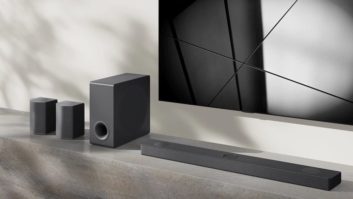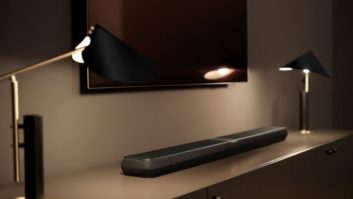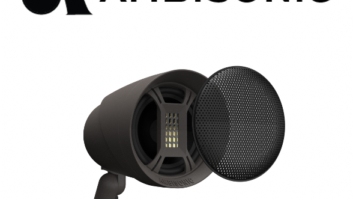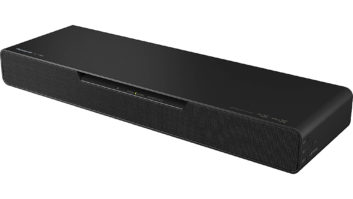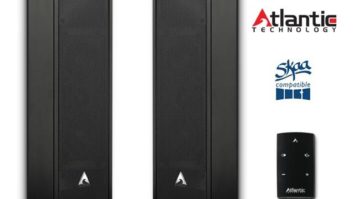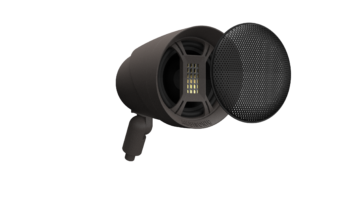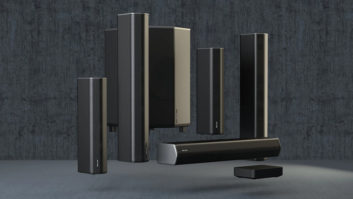TWICE:How well are active soundbars doing?
Duffy: The market for soundbars continues to grow with an increasing number of products including in-demand features such as Bluetooth and wireless subs. Polk is a strong leader in this market, and we continue to invest in product development, including the recent launch of our Bluetooth-enabled Surroundbar 5000. Additionally, Definitive Technology is helping to redefine the soundbar market with the recent launch of our Solocinema XTR with detailed, sonically accurate performance that until recently was not associated with soundbars.
Sumner: Soundbars are up almost across the board. We believe they will end the year up 50 to 60 percent in units and 70 to 80 percent in dollars in the total market. The growth is good across the board, but most encouraging is the growth in soundbars over $500. We appear to have stopped the race to zero on soundbar ASPs, which should be good for consumers, retailers and manufacturers. We are bullish on soundbars in 2013 and think it will be an even better solution for consumers, as it becomes not just amplified TV, but the audio amplification for music as well, especially in secondary rooms.
Manowitz: As the biggest growth category within the home audio space, 2013 will be a great year for this category. While some of this is driven through bundle promotions [with TVs], consumer desire shows that they are interested in a quality audio experience. A good proof point is the fact that we see ASPs increasing in this category. Additionally, our own research shows dramatic impacts to soundbar interest when consumers are given a choice based on sound quality.
Poggi: Soundbars in 2012 doubled in sales, according to most industry sources. We believe the growth will continue in high double digits but not at the doubling rate that we saw last year. We also see an opportunity in the under $1,000 range for those customers buying TV sets in the $1,500 to $2,000 range.
TWICE: What other component segments are growing?
Sumner: We are seeing increasing demand for higher-end soundbars with Yamaha’s YSP system, which delivers real 7.1 surround sound by driving multiple speakers with individual digital amps. These tend to go into main entertainment rooms or “important” secondary rooms, like a room focused on gaming. There is also definitely a growing market for wireless speakers. They really match the consumer lifestyle of having their smartphone or tablet with them at all times but still being able to enjoy their music in any environment — kitchen, bedroom, bath, outdoors, etc.
Poggi: Regardless of whether they are passive or active or the number of channels offered (2.0, 2.1, 3.1, etc.), the popularity of soundbars will continue to grow. Higher-end models will also continue to gain traction. Additionally, networked speakers, both wired and wireless, show real promise, as do the new “dock speakers.”
Duffy: The rapid adoption of Bluetooth for audio has opened a whole new realm of opportunities for products that offer the convenience and appeal of streaming audio content from smartphones, tablets and PCs. We’re very bullish in this area, as you will see at CES. These products are just the beginning. As technologies continue to evolve and improve, we’ll see a concurrent number of products that incorporate technologies such as AirPlay, Bluetooth and other wireless technologies.
TWICE: Any other audio segments showing good growth?
Sumner: We continue to see good growth in twochannel audio. That includes two-channel amps and receivers. The market is still small, but the growth is good. The component-sized network streamers are still a bit of a puzzle for U.S. consumers. They have really taken off in Europe but have been slow to catch on here in the U.S.
Poggi: Yes. USB DACs, turntables and streaming devices are all showing positive signs of growth, and it looks like this growth will continue into 2013.
TWICE: At what point (price or features) do active soundbars shift in consumer perception from being TV-sound enhancements to becoming home-theater systems?
Sumner: Soundbars really can’t be a true hometheater system unless they deliver discrete 5.1 or 7.1 channels of sound. That’s the only way to really immerse yourself in a movie, sporting event or game. That puts the soundbar solution that provides a real home-theater experience in the $500-plus range. Consumers who purchase higher-end soundbars with real surround sound really love them. The challenge is how to demonstrate them at retail and give the consumer the experience. Most retail environments are more open, which makes the consumer feel comfortable in the store, but proves to be a challenge to find walls to bounce sound beams off of. Fortunately, most home environments have enough walls to provide a great experience. If we can find a way to demonstrate them properly, we can sell more soundbars for the main entertainment room of the home.
Manowitz: We are already seeing shifts in the way soundbars are being used in the home. The popularity of Bluetooth is a great example. Additionally, as we see the popularity of music services being used on TVs, Blu-ray players and other streaming devices, the desire for consumers to have a great audio experience continues to drive this growth.
Poggi: The combination of 3.1 playback and/or HDMI switching are really the tipping points. This occurs at around $600. At this price and with these features, the customer perception is that the soundbar is a functional and qualitative equivalent to a similarly priced home-theater component solution.




